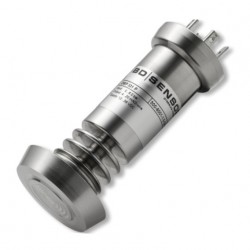
Hygienic measurement instrumentation are designed for use by the food, drink and pharmaceutical industries, which require a high level of cleanliness in their manufacturing processes.
Hygienic applications require that all parts in contact with the process media must have a high level of cleanliness and include precautions against contamination.
To maintain hygiene in production processes, equipment needs to be designed so that it is possible to easily clean all parts in contact with the process media. Also the contact surface of these parts should deter the build up of bacteria and mould and other pathogens that may cause harm to human health.
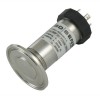 Food Grade Pressure Sensors - Find food grade pressure sensors with hygienic flush diaphragms. Features 316L SS wetted parts, food safe oil fill or dry cell options for CIP/SIP applications in food, dairy & beverage processing.
Food Grade Pressure Sensors - Find food grade pressure sensors with hygienic flush diaphragms. Features 316L SS wetted parts, food safe oil fill or dry cell options for CIP/SIP applications in food, dairy & beverage processing.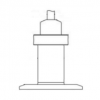 Sanitary Voltage Output Pressure Transducers - Sanitary 316 stainless steel voltage output pressure transducers are essential for monitoring pressure in food, brewing, medicine, and dairy production processes.
Sanitary Voltage Output Pressure Transducers - Sanitary 316 stainless steel voltage output pressure transducers are essential for monitoring pressure in food, brewing, medicine, and dairy production processes.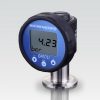 Sanitary Process Fitting Flush Diaphragm Digital Pressure Gauges - Sanitary flush diaphragm pressure gauges with digital displays offer precise pressure monitoring in hygienic process applications.
Sanitary Process Fitting Flush Diaphragm Digital Pressure Gauges - Sanitary flush diaphragm pressure gauges with digital displays offer precise pressure monitoring in hygienic process applications.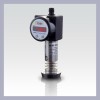 Food & Drink Grade, Hygienic Pressure Gauges - Ensure the safety and integrity of your food and beverage processing with specialized hygienic pressure gauges.
Food & Drink Grade, Hygienic Pressure Gauges - Ensure the safety and integrity of your food and beverage processing with specialized hygienic pressure gauges. Hygienic Pressure Transmitters - Hygienic pressure transmitters equipped with diaphragm seals offer a reliable and sanitary solution for pressure monitoring in critical industries like food processing, pharmaceuticals, and semiconductor manufacturing.
Hygienic Pressure Transmitters - Hygienic pressure transmitters equipped with diaphragm seals offer a reliable and sanitary solution for pressure monitoring in critical industries like food processing, pharmaceuticals, and semiconductor manufacturing.
Hygienic measurement instrumentation plays a crucial role in maintaining product safety and quality within the food, beverage, and pharmaceutical industries. These industries adhere to stringent cleanliness standards, demanding that all equipment involved in the production process meets strict hygienic design criteria. Hygienic instrumentation is specifically designed to prevent contamination and facilitate thorough cleaning, ensuring the integrity of the final product and safeguarding consumer health. This guide will explore the key considerations for selecting the right pressure, level, and temperature measurement instruments for hygienic applications.
- Who uses hygienic measurement instrumentation? Process engineers, maintenance technicians, quality control personnel, and facility managers within the food, beverage, and pharmaceutical industries.
- Which industries utilise hygienic equipment? Food processing, beverage production, dairy, pharmaceutical manufacturing, biotechnology, cosmetics, and other industries with strict hygiene requirements.
- Which areas wihin a facility are hygienic devices found? Clean rooms, processing areas, filling lines, storage tanks, and other areas where product purity and sanitation are paramount.
Selection Considerations
Selecting the appropriate instrumentation for hygienic applications requires careful consideration of several factors beyond basic measurement performance. Here’s a breakdown of what to look for:
- Surface Roughness (Ra) value
- 316L Stainless Steel
- Crevice-free Design
- CIP/SIP Compatibility
- EHEDG and 3-A Certified
- Tri-Clamp Connections
Surface Finish
A smooth, highly polished surface finish is essential to prevent bacterial adhesion and biofilm formation. Look for instruments with surface roughness values (Ra) specified according to hygienic standards. Electropolishing further enhances cleanability.
Material Compatibility
Materials used in hygienic instrumentation must be compatible with the process media and cleaning agents. Stainless steel (typically 316L) is a common choice due to its corrosion resistance and hygienic properties. Consider the potential for chemical reactions or material degradation.
Design and Construction
Instruments should be designed to eliminate dead spaces, crevices, and other areas where bacteria can accumulate. Self-draining designs are preferred to ensure complete product removal and facilitate cleaning-in-place (CIP) processes. Avoid threaded connections where possible, opting for hygienic clamp connections instead.
Cleanability
The instrument must be easily cleanable, either manually or through CIP/SIP (Sterilization-in-Place) processes. Consider the ease of disassembly and reassembly for maintenance and inspection. Ensure compatibility with common cleaning agents and temperatures.
Certifications and Approvals
Look for instruments that meet relevant hygienic standards and certifications, such as EHEDG (European Hygienic Engineering & Design Group) and 3-A Sanitary Standards. These certifications provide assurance of the instrument’s hygienic design and suitability for food and pharmaceutical applications.
Connection Type
Hygienic connections, such as Tri-Clamp or other sanitary fittings, are essential for maintaining a crevice-free and easily cleanable connection to the process. These connections minimize the risk of contamination and allow for quick disassembly for cleaning or maintenance.
By carefully considering these factors, you can select the right pressure, level, and temperature measurement instruments to ensure the highest levels of hygiene and product safety in your food, beverage, or pharmaceutical production processes.
Hygienic Product Features
Hygienic instruments have highly polished stainless steel parts exposed to the process media and are installed using clamped seals.
Direct threaded type fittings are avoided since they introduce crevices which would attract the build up of process material over time and require dismantling for cleaning. Threads are used in some types of clamped fittings in order to pull two components together to make a seal, but are only used on the non-contacting external surfaces.
Material
The preferred type of material for hygienic parts is polished stainless steel 316L because it is easy to clean, can be welded without the introduction of another material and has good corrosion resistance to various media including cleaning agents.
Process Fittings
The types of process connections used for fitting hygienic pressure instrumentation are designed to reduce crevices and hidden spaces where residue from the process media can become trapped and lead to the growth of micro-organisms causing product contamination. A popular type of hygienic fitting is the Tri-clamp which uses a double hinged clamping ring that is tightened around two flanged surfaces separated by an elastomer O ring seal.
Food Grade Oil Fill
Some designs of pressure sensing technology include an oil-fill which is contained behind an thin metal isolation diaphragm. Since there is a risk that a thin and exposed diaphragm could be damaged and leak its contents into the process, it is necessary to use an oil that will not cause harm if accidentally mixed with the process media. The types of oil used include Peanut oil, Olive oil and Food grade silicone oils.
Industry Types
The types of industry that use hygienic pressure measurement equipment include food processing, breweries, drink production, pharmaceuticals, medicines, biotechnology and medical equipment.
Related Help Guides
Related Technical Terms
Related Product and Application Guides
Contact us about this Hygienic page to request more information, or to discuss your application requirements.

